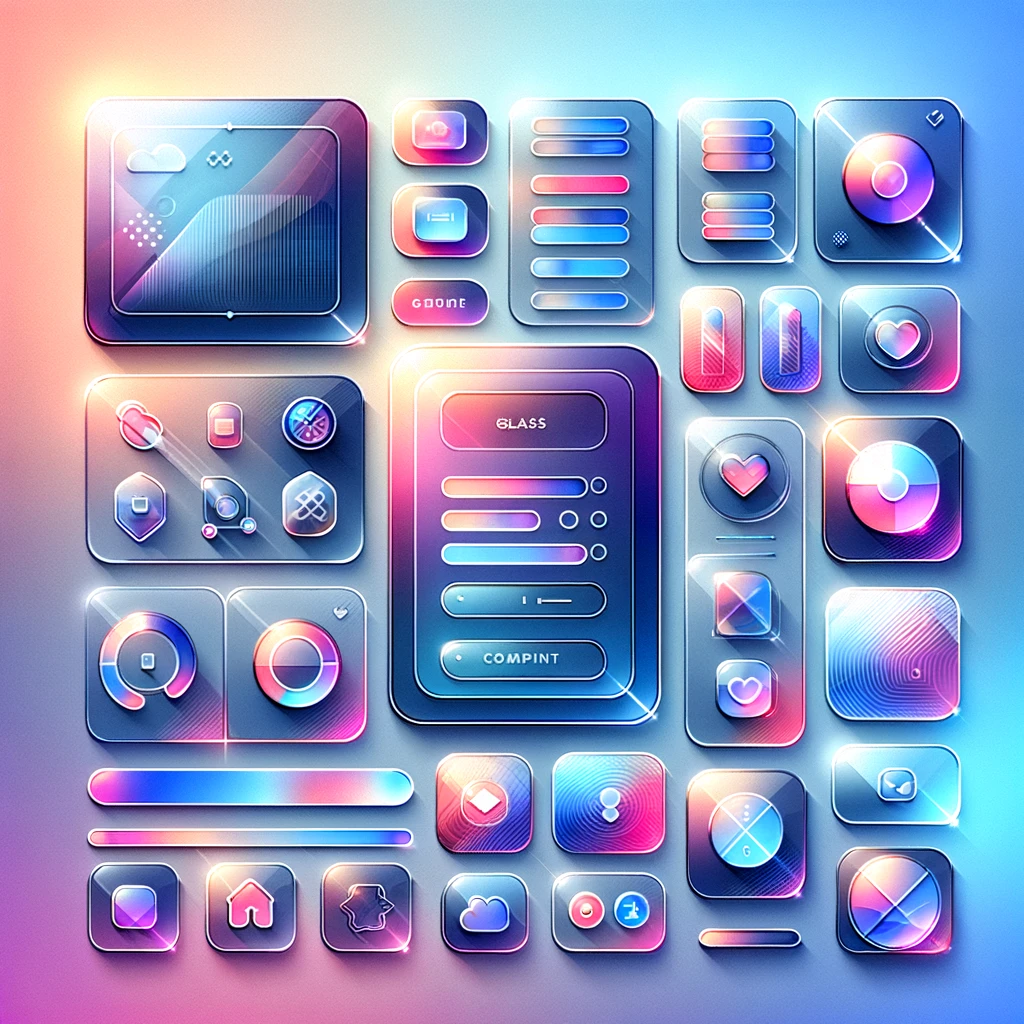UITextField in UIKit
ITextField is a fundamental component in the UIKit framework, providing a user interface element that allows users to input text. In this article, we will explore what UITextFields are.

Understanding UITextFields in UIKit
UITextField is a fundamental component in the UIKit framework, providing a user interface element that allows users to input text. In this article, we will explore what UITextFields are, the various functionalities they offer, and provide practical code examples to demonstrate how you can implement and customize them in your iOS projects.
What is a UITextField?
A UITextField is a subclass of UIControl that provides an editable text area. It is commonly used for inputting small amounts of text, such as usernames, passwords, or search queries. UITextFields are versatile and can be customized to suit various input requirements.
What Can You Do with UITextFields?
UITextFields offer a variety of customization options and functionalities. Here are some key things you can do with UITextFields:
- Set Placeholder: Display a placeholder text when the text field is empty using the placeholder property.
- Adjust Font: Customize the font style, size, and weight using the font property.
- Text Color: Change the color of the text using the textColor property.
- Text Alignment: Align text within the text field using the textAlignment property.
- Secure Text Entry: Mask the input text for sensitive information such as passwords using the isSecureTextEntry property.
- Keyboard Type: Specify the type of keyboard to display using the keyboardType property.
- Delegate: Implement the UITextFieldDelegate protocol to handle events such as editing changes, return key presses, and more.
Implementing UITextFields in Swift
Let's dive into some code examples to see how you can create, customize, and work with UITextFields in Swift.
To create a simple UITextField, you can initialize it with a frame and add it to a view controller's view. Here is an example:
import UIKit
class ViewController: UIViewController {
override func viewDidLoad() {
super.viewDidLoad()
// Create a UITextField with a frame
let myTextField = UITextField(frame: CGRect(x: 50, y: 100, width: 200, height: 40))
myTextField.placeholder = "Enter text here"
myTextField.borderStyle = .roundedRect
// Add the UITextField to the view controller's view
self.view.addSubview(myTextField)
}
}
In this example, we create a UITextField with a specified frame and set its placeholder text and border style properties. The text field is then added to the view controller's view hierarchy.
Customizing a UITextField
You can customize UITextFields by setting various properties, such as font, text color, and keyboard type. Here is an example:
import UIKit
class ViewController: UIViewController {
override func viewDidLoad() {
super.viewDidLoad()
// Create a UITextField
let myTextField = UITextField()
myTextField.translatesAutoresizingMaskIntoConstraints = false
myTextField.placeholder = "Username"
myTextField.font = UIFont.systemFont(ofSize: 16)
myTextField.textColor = .darkGray
myTextField.borderStyle = .roundedRect
myTextField.keyboardType = .emailAddress
myTextField.returnKeyType = .done
// Add the UITextField to the view controller's view
self.view.addSubview(myTextField)
// Set Auto Layout constraints
NSLayoutConstraint.activate([
myTextField.centerXAnchor.constraint(equalTo: self.view.centerXAnchor),
myTextField.centerYAnchor.constraint(equalTo: self.view.centerYAnchor),
myTextField.leadingAnchor.constraint(equalTo: self.view.leadingAnchor, constant: 20),
myTextField.trailingAnchor.constraint(equalTo: self.view.trailingAnchor, constant: -20),
myTextField.heightAnchor.constraint(equalToConstant: 40)
])
}
}
In this example, we create a UITextField and customize its placeholder, font, text color, border style, keyboard type, and return key type. We also use Auto Layout to center the text field and set its leading, trailing, and height constraints.
Handling UITextField Events
UITextFields can handle various events, such as when the user begins or ends editing, or when the text changes. Here is an example of implementing the UITextFieldDelegate protocol to handle these events:
import UIKit
class ViewController: UIViewController, UITextFieldDelegate {
override func viewDidLoad() {
super.viewDidLoad()
// Create a UITextField
let myTextField = UITextField()
myTextField.translatesAutoresizingMaskIntoConstraints = false
myTextField.placeholder = "Enter your name"
myTextField.borderStyle = .roundedRect
myTextField.delegate = self
// Add the UITextField to the view controller's view
self.view.addSubview(myTextField)
// Set Auto Layout constraints
NSLayoutConstraint.activate([
myTextField.centerXAnchor.constraint(equalTo: self.view.centerXAnchor),
myTextField.centerYAnchor.constraint(equalTo: self.view.centerYAnchor),
myTextField.leadingAnchor.constraint(equalTo: self.view.leadingAnchor, constant: 20),
myTextField.trailingAnchor.constraint(equalTo: self.view.trailingAnchor, constant: -20),
myTextField.heightAnchor.constraint(equalToConstant: 40)
])
}
func textFieldShouldReturn(_ textField: UITextField) -> Bool {
textField.resignFirstResponder()
return true
}
func textFieldDidBeginEditing(_ textField: UITextField) {
print("Editing began")
}
func textFieldDidEndEditing(_ textField: UITextField) {
print("Editing ended")
}
}
In this example, we implement the UITextFieldDelegate protocol to handle text field events. The textFieldShouldReturn method resigns the first responder status when the return key is pressed, while the textFieldDidBeginEditing and textFieldDidEndEditing methods print messages to the console when editing begins and ends.
Using Secure Text Entry
For sensitive information such as passwords, you can enable secure text entry to mask the input text. Here is an example:
import UIKit
class ViewController: UIViewController {
override func viewDidLoad() {
super.viewDidLoad()
// Create a secure UITextField
let passwordTextField = UITextField()
passwordTextField.translatesAutoresizingMaskIntoConstraints = false
passwordTextField.placeholder = "Enter your password"
passwordTextField.isSecureTextEntry = true
passwordTextField.borderStyle = .roundedRect
// Add the UITextField to the view controller's view
self.view.addSubview(passwordTextField)
// Set Auto Layout constraints
NSLayoutConstraint.activate([
passwordTextField.centerXAnchor.constraint(equalTo: self.view.centerXAnchor),
passwordTextField.centerYAnchor.constraint(equalTo: self.view.centerYAnchor),
passwordTextField.leadingAnchor.constraint(equalTo: self.view.leadingAnchor, constant: 20),
passwordTextField.trailingAnchor.constraint(equalTo: self.view.trailingAnchor, constant: -20),
passwordTextField.heightAnchor.constraint(equalToConstant: 40)
])
}
}
In this example, we create a UITextField and enable secure text entry using the isSecureTextEntry property. The text field is then added to the view controller's view and centered using Auto Layout constraints.
Conclusion
UITextFields are essential components for collecting user input in your iOS applications. In this article, we've covered the basics of what UITextFields are, their various functionalities, and provided practical code examples to help you implement and customize them in your own projects. From setting basic properties to handling events and enabling secure text entry, mastering UITextFields is crucial for creating interactive and user-friendly interfaces.
Understanding and effectively utilizing UITextFields can significantly enhance your app's usability and user experience. Experiment with different UITextField properties and styles to create dynamic and functional input fields in your iOS applications. Stay tuned for more articles that will explore other UIKit elements and their practical applications in iOS development.





